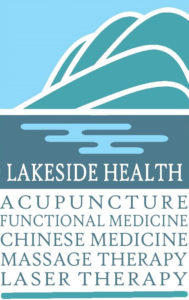Question:
I’ve been considering paying for hormone panels that MSP doesn’t cover but with all the news about hormone disrupting chemicals in the environment would it be more worthwhile to get a toxic pollutants profile?
Dr. Donna Rasplica, B.C. Reg. Doctor of Traditional Chinese Medicine, loves how traditional herbal medicines and therapies can be matched to the individual. She specializes in treating pain, chronic diseases, and problems of aging.
ANSWER:
An amazing question. Measuring the levels of pollutants – in blood or urine – provides undeniable proof of exposure. As the drug test of the ecological world it answers one simple question: “Is it in me?” The test is impervious to wishful or ignorant thinking and is a reality check on health in our hazardous environment. Other tests can show relative genetic ability to ‘clear’ pollutants – once known there are lifestyle and supplement choices that can compensate. And, yes, I agree this test might be more primary information and reflects the fact of what is really an issue for all of us.
Rachel Carson (‘Silent Spring’) who first warned us of the endocrine disruption of herbicides and pesticides, ironically died of breast cancer. The suite of chemicals in the average North American body is now assessed at 148 and includes, along with dioxins, PCBs, flame retardants etc, metabolites of the most commonly used agricultural chemical, easily available over the counter – 2,4-D.
2,4-D is commonly used for weed control and 1500+ products contain it as an active ingredient. It’s been persuasively linked to cancers, neurological diseases and reproductive problems. The link between 2,4-D and non-Hodgkin’s lymphoma, especially in farmworkers and in children, is strong. Ask your vet about the prevalence of bladder cancer in dogs.
Studies on rats of the effects of 2,4-D have been accepted as proof of safety. In 2004 the genome of the rat was published in the prestigious journal Nature showing that rats have genes for detoxification that people don’t and are a poor model for toxicity testing. There’s a reason rats thrive in sewers and people can’t. Dogs, similar to humans, show much more sensitivity to 2,4-D (bladder cancers) but the dog data was rejected in favour of the rat data.
2,4-D continues to be used, where legal, for its low cost. Alternatives such as corn gluten meal and vinegar-based products are available. Are we making ethical decisions? Are we aware of what’s happening, literally in our own backyard? Are we thinking, as First Nations people teach, not just of our own children but the 7th generation?
At the wharf recently I was shocked to see kids idly tossing plastic bottles into the bay. I thought ‘how can they not care?” And then I thought perhaps they’re simply reflecting our lack of care for them.
Gasoline was once a leading source of lead exposure in children – it took decades of risk and harm to ban lead. Between 1976 and 1980 gasoline lead was reduced by 55% and the lead in children’s bodies declined by the same amount. The prediction was that the drop in body burden would be trivial. So convincing was the actual data that the EPA sped up the timetable and eliminated lead by 1991. Banning smoke in public places truly resulted in less smoke inside of us. During the 1990’s levels of the metabolic product of nicotine in the blood of non-smokers fell by 70%.
Children are our most precious and vulnerable group. Why do we wait? And why do we individually turn a blind eye? UNESCO’s 2005 Precautionary Principle warns that an action shouldn’t be taken (or a product used) if the consequences are uncertain and might be dangerous. The burden of proof, they say, should be on the product maker and not on the public.
We are all of us involved in the health of all of us.



